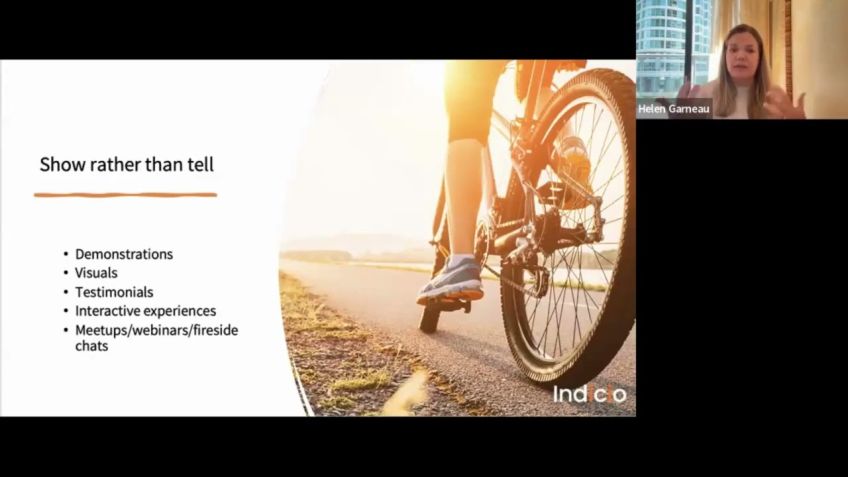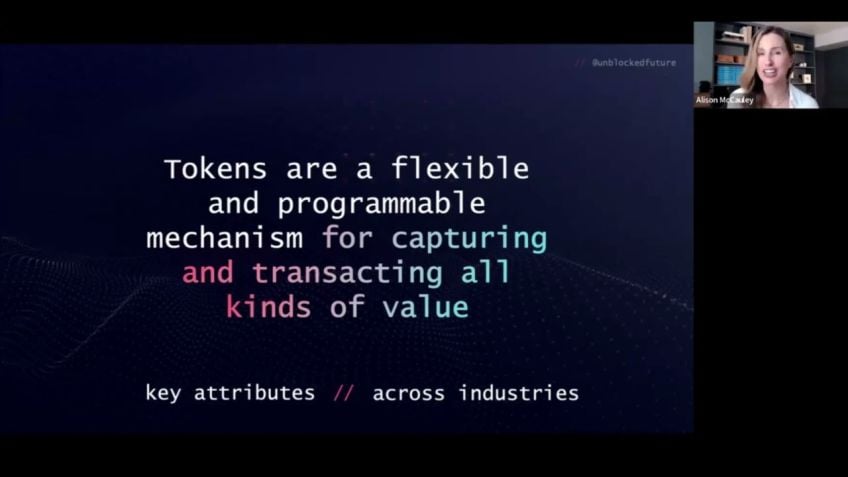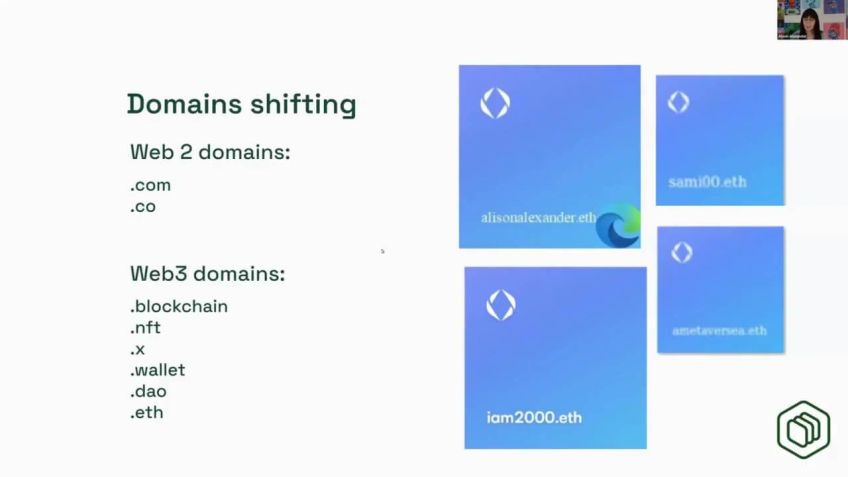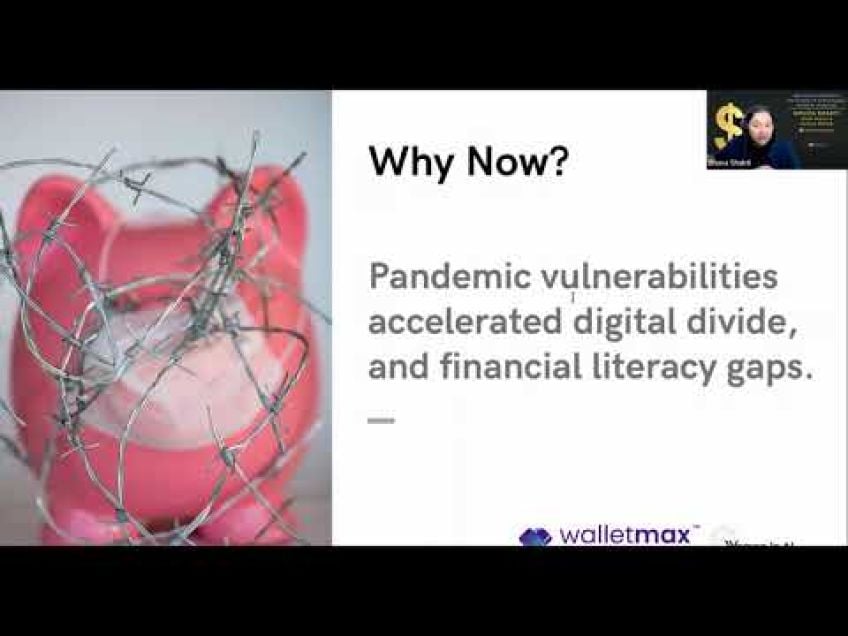From blockchain technology to education equity by Samia Kazi
Blockchain Technology: A Boost for Education Systems & Equity
Education systems often struggle with systemic issues relating to equity, child protection, and overall safety. A seldom-explored solution to these recurring problems lies in the intersection of blockchain technology and early childhood education. As an emerging frontier, blockchain has the potential to shape our education systems in ways yet to be fully realized. This discussion aims to shed light on how we could use blockchain to solve some of the systemic issues present in our education systems, with a particular focus on early childhood education.
Introducing Dr. Sonia
Dr. Sonia is the co-founder and vice president of the Arabian Child Corporation, a Boston-based non-profit organization. She's also the co-founder of Global Childhood Academy, an ed tech platform for public use, and she brings a blend of expertise as an innovation strategist at Childhood Education International. Her unique combination of a background in both technology and early childhood education equips her with an insightful perspective on the potential symbiosis of the two realms.
Understanding Blockchain
The most simplistic definition of blockchain could be given as a shared notepad. Imagine a teacher assigning all students to take note of pupil Adam's grade, 95 out of 100. Instead of the teacher maintaining an Excel sheet or a private record, everyone records this in their individual notebooks. This mutual verification is the essence of what blockchain constitutes; for information to be accepted, it must match all the other entries. Any attempts to change this consensus, such as altering Adam's grade, wouldn't align with the information in the other notebooks, hence wouldn't be accepted.
Features of Blockchain for Educational Systems
The features of blockchain relevant to education systems include:
- Resistance to corruption: Every node on the network has a copy of the ledger, like the students with their individual notebooks, ensuring data legitimacy.
- Enhanced security: There is no central authority holding all the data, thereby increasing its safety.
- Distribution: Just like the student's notebooks were scattered throughout the classroom, blockchain data is distributed across multiple nodes worldwide.
- Consensus: Decisions made are based on predetermined algorithms and general agreement in the network.
Proposed Blockchain Solutions
The following are some ways blockchain can revolutionize our early childhood education systems:
1. Policy Making & Fund Distribution
By using blockchain, we can analyze the necessary data about schools and communities, such as the socio-economic status, school profile, and staff qualifications, without revealing sensitive information like race or gender.
2. Digital Verification of Credentials
Blockchain can help in confirming the qualifications and experience of education staff, making credentials transferable across countries.
3. Manage Wait-lists and Registration
Through smart contracts, blockchain can automate wait-lists for schools, reducing favoritism and administrative costs.
4. Protecting Sensitive Information
Blockchain can securely store documentation collected by schools, ensuring sensitive information about children doesn't fall into the wrong hands.
5. Sharing Information
Blockchain technology can connect fragmented systems, allowing for seamless data sharing across divisions.
6. Spotting Children with Special Needs
Blockchain could connect systems designed to identify children at risk of special needs, ensuring no child falls through the cracks and receives the necessary care from medical and educational specialists.
7. Managing Inventory
Blockchain can help childcare programs by improving the management and distribution of resources between childcare programs and businesses, factories, municipalities.
If you're interested in furthering your skills and learning how to serve, educate, and care for young children, consider joining Dr. Sonia’s startup, Global Childhood Academy. This cutting-edge platform is pioneering the integration of blockchain technology into early childhood education.
Video Transcription
My name is uh Doctor Sonia. And today I'm gonna be talking to you about um something a new concept, uh things that don't usually go together uh which is Blockchain technology, education systems and achieving equity.So kind of how do we use uh the Blockchain technology to solve some of the issues or systemic problems that we have in education systems and specifically, um the the challenges or the the problems that are related to, to equity, to safety and to protection uh of our Children.
And when I talk about education systems, uh it's so wide. Uh So I wanted to focus on, on the education systems that involve Children at their most vulnerable state, which is when they are infants and toddlers and preschoolers. So that's what E ce education system means. So specifically, I'll be talking to you about some practical and kind of wild ideas, controversial ideas that how we could use Blockchain to solve some of the problems that we have specifically in early childhood education and help to improve um those education systems. So, first of all, a little bit about myself, I am the co-founder and the vice president of an organization called Arabian Child Corporation. Arabian Child um is, is a nonprofit based in Boston. Uh but we have branches uh in several countries uh in the Gulf region, in the Middle East region. Uh So our headquartered in the, in the Middle East is Dubai and then we have a couple of partners and offices in some neighboring countries. And what Arabian Child does is primarily uh train and credential and qualify uh women and teachers and help them get placements uh in schools. I'm also the co-founder of Global Childhood Academy. Global Childhood Academy is an ed tech platform uh which houses uh specific credentials and qualifications that are available for the public, for anyone who directly and indirectly works with young Children. And I'm also very proud to be the innovation strategist at Childhood Education International.
So if you don't know about Blockchain, it was kind of introduced through a famous white paper that was written by an anonymous person or a group of anonymous people called Satoshi Nakamoto Blockchain. Um The, the the technical definition of it, it's a system where where in which a record of transactions made in Cryptocurrency, they're maintained across several computers that are linked in a peer to peer network. Now looking at this probably like, OK, thank you. That definition didn't help me at all. So because I'm from the education field, I'm gonna attempt to give you a very simple definition for you to immediately understand what Blockchain is So imagine you are a teacher and you walked into a classroom and you have 25 kids in the classroom and you told all your Children to open their notebooks and open to the first page where there was a line available or the first empty line in their notebooks.
And you told everyone to write down that Adam received a 95 out of 100. So everybody recorded Adam's grade, that was 95 out of 100. Now all the Children recorded that in ink. You as a teacher did not record, you didn't have like a list of the grades in your Excel sheet or on your computer or in your notebook, right? You had all the Children write that down in all of their individual notebooks. So in a sense that was very simply kind of re re explains what Blockchain is. So in order for someone to corrupt that data or change that data, right? All of the, all of those Children would need to rewrite their entire notebooks, which is impossible in Blockchain. If one of those Children changed Adam grade Adam's grade from 95 to 97 it wouldn't, you know, it wouldn't match up with all the information that is in other, in the other notebook. So therefore it wouldn't be accepted. Um Now that's a very simple way to understand what, what Blockchain is. So the features that are really interesting from Blockchain that are kind of relevant for the education system. So in the next couple of slides, I'm gonna show you these all these practical examples, right?
So before I can show you those practical example, we have to dive a little bit deeper and see. So what are the features of Blockchain that are gonna be important for those solutions that I'm going to propose to you in a moment? So one, it's very important for us to understand that if we are building using a solution powered by Blockchain, it can't be corrupted. So every node on the network has a copy of the ledger, just like how all of those 25 Children had um copies of Adam's uh grade, right? So the validity is checked before information can be added. There's also an enhanced level of security. So there's there's no central authority. So you as a teacher didn't have that Excel sheet because, you know, technically people could hack into that one source and change grades for all the students, right? So there's lots more layers of um encryption and there's no one central authority and it's distributed. So exactly like how those children's uh notebooks were, you know, they're kind of distributed in the real uh Blockchain world. I mean, these these nodes or these ledgers are distributed across the world and that distributed computational power that is what ensures um the the protected outcome or the better outcome for the information that is uh that be is being stored on the, on the Blockchain and there's consensus.
So it's not as simple as the example that I, that I shared with you with Adam's grade. But there's consensus, there's cleverly designed algorithms and decisions are ba are made based on consensus and very clear and just uh rules. So if think about it right now, think about our education systems right now, they're usually, it's very centralized. There's one core authority or several core authorities that have priv access to privileged information, they have access to history and they have access, they, they get to confirm or make decisions um when they want to make decisions that will affect our Children that will affect our families.
And um you know, in one sense, it's, it's, of course, it's, it's important for order for, for um to establish processes and, and routines for us to have those central or core authorities. But that's why, um you know, just reminding you of myself, I'm a child advocate at heart. I balance my two kind of my, my uh technology expertise and my child advocacy expertise. Um I have my bachelor's is in computer science and programming, but my doctorate and my master's, it's an early childhood education um and policy reform. So I really look at uh I wanna look at things and with balance. So none of the examples that I'm gonna share with you are something that is gonna 100% work. I am. Uh I'm, I'm sharing with you kind of controversial uh ideas that that could at least get us uh talk about different solutions and using technology and education, which I think is is so behind uh as a sector as a whole compared to the use of technology in other sectors to solve problems.
So if we're moving to a decentralized um kind of system, uh participants in the network can access transaction and can access information right freely without revealing certain personal information. So I want you to keep that in mind because in the next couple of slides, I'll show you.
So how do I access information without seeing all the information? Right. And that's a very important feature uh that Blockchain can give us. So how can we use uh Blockchain to solve some of these problems? So one first problem and I'm gonna just go slide by slide. I'm gonna, each slide will be uh like addressing a certain problem and it's a certain type of uh solution that I'm addressing. So the first one, I want you to imagine that you were a policy maker and you were in charge of distributing funds to a specific group of schools and you needed to and you were tasked with the um uh with, with making a decision on which schools get the funding. So usually you're gonna have your own metrics. Right. Right. You're gonna look at, OK, how do I decide which schools need it the most? And, and of course, every state or every country or every region will have different kind of rubrics on how they make certain decisions. But what if we could u utilize Blockchain to be able to see information about schools and families and about uh about Children only and only reviewing necessary information. So, of course, if you're irresponsible and distributing funds, you wanna see the socio-economic status of the schools um of the, of the, of the, of the community in that area.
So maybe lower economic status might need more support or maybe more um support with programs that are related to child health and well being or protecting Children from violence and from abuse. You may wanna look at school profile, you wanna look at the qualifications of the people that are in that school, right? But what you don't need to see, you don't need to see is information about race names, gender, geography or racial identity. So using Blockchain technology to kind of look at information without revealing all the information is a very, very useful, useful way to help us um make make decisions. Another very important thing is uh digital credentials. So if any of you have ever traveled from one country to another kind of taken your qualifications and trying to like re-establish yourself in a different region or a different state or a different country, um You're gonna be worried about, ok, how do I make sure that my credential that I gained in this in that country is kind of worth the same value in this country.
And I think that Blockchain has become very popular over the last couple of years that it's offering, um, um, the, the way, a way to verify credentials. Uh, so now if you've taken a course online, you can see that, um, uh, some of the organizations that offer you online credentials or digital credentials are actually verified through Blockchain, meaning that they're verified from the source and they can't be corrupted. So we could use digital credentials to assess and confirm the academic qualifications of our staff. We can use it to, to uh ensure that they have the right educational history and the pra practical experiences licenses competencies. And that will be kind of transferable from country to country saving almost 80% in the cost and time of, of credentialing. Another interesting idea uh is to manage waitlist and registration. So whoever has been a I, I'm a parent of I have four kids. And when my um if you're, if you had young babies and you're kind of putting them on the waitlist for a very well known uh preschool or childcare programs, you can you understand how frustrating wait list could be. So what is one of the features that is kind of developed using the Blockchain technology is something called smart contracts. So what if we could automate the use of um putting families on, on waitlist?
And I want you to imagine how if we could utilize the technology like Blockchain, Blockchain, how we could fairly um eliminate corruption or favoritism, we could eliminate, we could reduce administrative costs. Um We could reduce the time spent um in kind of reconciling and managing and coordinating information.
So you're, you're welcome to take screenshots of this um of this slide. And I wanted to just share with you a couple of companies that are utilizing some of technologies similar to this, but they're applying it in different sectors. So none of the examples which is um you know, like uh easy one company or Midas m another company, they're applying ideas like this in other sectors. And what I'm suggesting is we could learn from those um those solutions and see how we can apply them to, to solve some of the pains that we're facing in the education sector. Another very important aspect is, you know, we talked about it a little bit before is protecting sensitive information. So imagine all of the documentation that is collected by schools about your Children. Imagine, you know, and I want you to just really take a moment and reflect where is that data stored saved on paper, personal computers sent via email. All of these are not secure. Um And we're endangering our, our, our, our Children or we could endanger our Children. Um And mind you, I wanna remind you again that in my session today, I'm I'm meaning to provoke.
Um, even though I, you know, um, usually I'm quite balanced, but just today, I'm really gonna advocate for it because I, I want us to kind of think outside of the box about what we could do. What about, you know, working in the education system? You can't imagine how many cases there has been of, um, pedophiles having access to our Children. What if we could, you create, um, uh global systems that are connected to authenticate people's records and check for criminal records and ensure that only people who are authenticated can work with our Children. And another thing is sharing information across sectors. So if there is a child in, in a vulnerable stage or suspected to abuse or in is in danger of abuse information is usually shared across sectors. So it will go from the teacher to the school director to the counselor who will go to the school, social worker, the psychologist and might go to outside social workers or the the family. You can just imagine this information being like toggled and going back and forth between all these emails and and systems, right? Sharing information between these sectors is critical.
If we don't share every instance where a child is in danger and when somebody eventually does go out and evaluates the danger with Children, you know, they might assess that situation um in incorrectly or inaccurately because information fell through the cracks or felt it didn't, didn't make it to the right people at the right time.
So Blockchain technology could connect these fragmented systems and help us provide seamless data. Uh accessibility across regions also makes it easier for employment process. So imagine if there was a easier and faster way for schools to hire teachers or provide references for teachers or making sure that we're getting promoted and rewarded using a fair and just uh systems, minimizing the time and money for and emotions and the energy that goes into the employment uh factors.
Another key thing is also detecting Children with special needs. So we call that in the education. Um you know, one way to describe it is at Children who are at risk for uh special needs. There are many assessment tools that are being developed all over the world that are reliable, valid tools that can help to identify even infants. See if Children have um any risk uh of uh of of needing um of having any developmental delays or needing any additional support.
What if those systems were connected so that we make sure that none of our Children are are falling through the gaps and not being cared for by the right medical and educational specialist and something maybe not so as critical but also has a lot of cost to especially early childhood programs or preschools, childcare programs is ordering inventory.
So a lot of the times childcare programs need uh recycled paper, cardboard boxes. And if you're a mom of preschoolers or you've gotten emails. It's like we would love you to donate, you know, um paper towel uh holders or bring us these recycled cardboard boxes. If you have um in, in one city in Italy called the Reggio Emilia. Actually, they, what, what they have is they've done this kind of systems without the Blockchain. They've connected childcare programs to all of the businesses, to the ministries, to the um to the different municipalities to ensure that there's no wastage of these kinds of resources so that there's um resources that maybe factories don't need anymore, maybe there's plants that the municipality doesn't need anymore that can then be shared with the um with the childcare program.
So there's, there's, there's no wastage um and information is like kind of transparent but also also protected in that way. None of the ideas that I shared with you are near perfect. We are far from implementing these ideas. But I hope that I shared with you a little bit insight about what kind of challenges we have in the early childhood um education system systems and how maybe um learning from other sectors and utilizing the Blockchain technology could help. And finally, I wanna invite you if you are interested to uh to learn more about. One of the companies that I I manage. Um Global Childhood Academy is the kind of like the coursera for childhood. So if you're interested in taking courses and and kind of enhancing your skills and learn how to serve, educate and care for young Children, then create a free account on Global Child and Academy. And I'm gonna drop my, my email in the chat and look forward to connecting with all of you on linkedin or email. Thank you.





